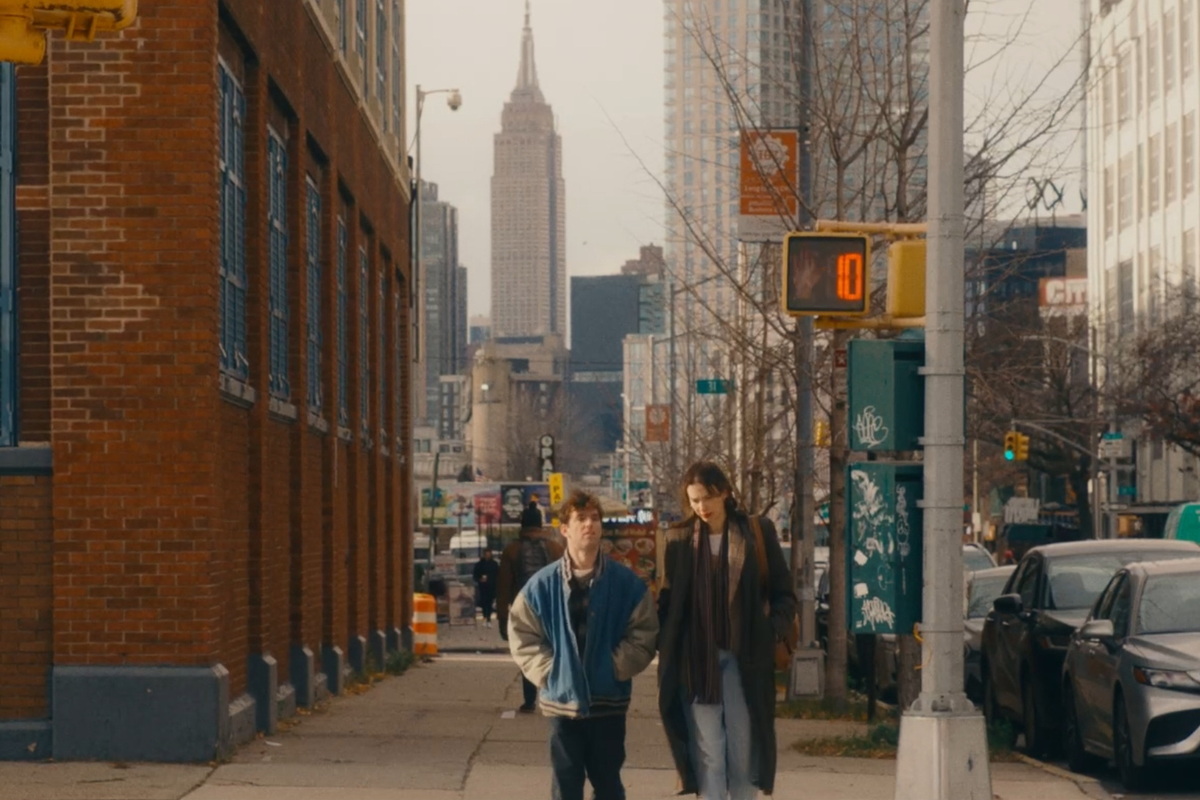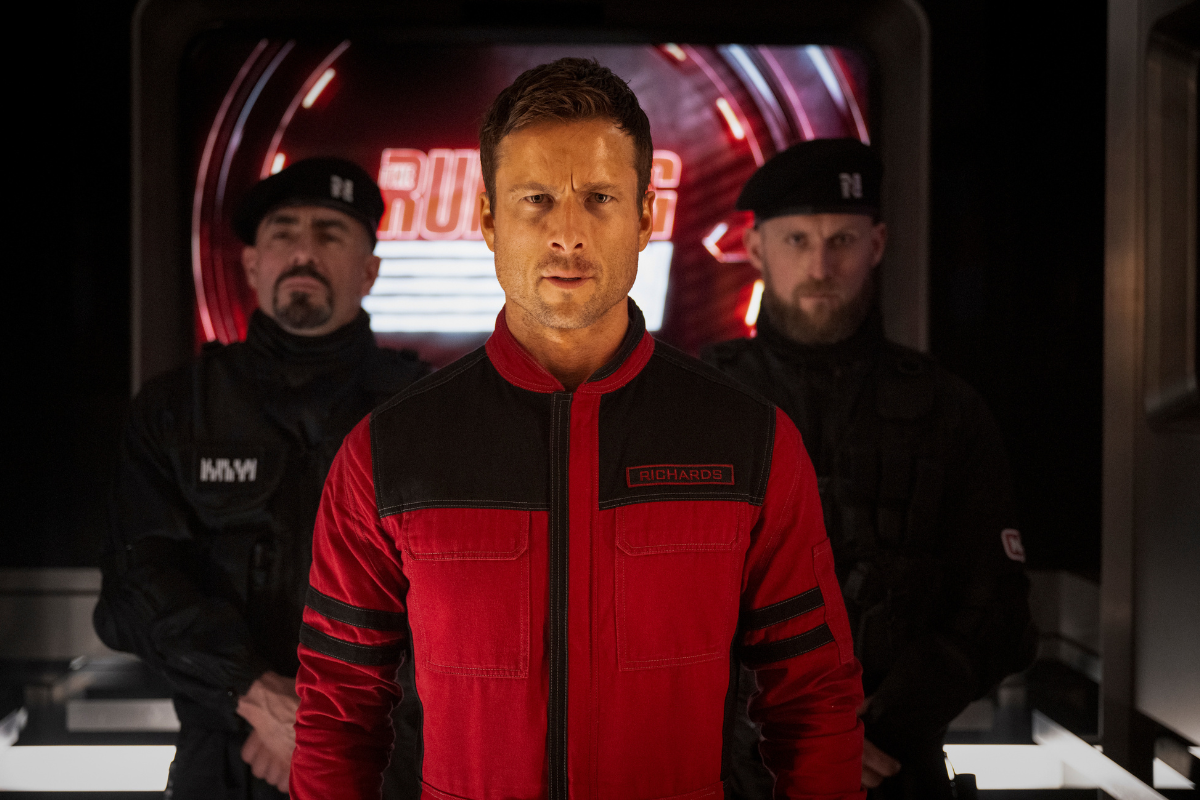Moving Pieces on a Collision Course: How ‘Fargo’ Showrunner Noah Hawley Weaves Crime and Irony
After five seasons and six Primetime Emmys, the anthology series ‘Fargo’ has a knack for stitching elaborate, ironic yarns of deception and death—and you betcha showrunner Noah Hawley isn’t finished yet.
After five seasons and six Primetime Emmys, the anthology series Fargo has a knack for stitching elaborate, ironic yarns of deception and death—and you betcha showrunner Noah Hawley isn’t finished yet.
“I describe Fargo as a lot of moving pieces on a collision course, but you never know which ones are going to collide and when,” he says.
Originally inspired by the 1996 Oscar-winning film of the same name by Joel and Ethan Coen, the streaming series began as an “homage to the tone and setting” of the original film but now embraces the sensibilities of the filmmakers’ oeuvre, one reason it consistently ranks “Fresh” among critics and fans on Rotten Tomatoes. Mixing crime and philosophy with seemingly random bursts of unnerving violence and humor, the show tells a self-contained story each season with what NPR calls “a wide array of characters whose brutality and venality are covered with just the right amount of Minnesota nice.”
Hawley, whose twin brother, Alexi, is also a television writer, wrote and created the series, which premiered in 2014, after being a writer and a producer on three seasons of TV’s Bones. In addition to being a novelist, Noah Hawley wrote and created the Marvel Comics-inspired TV series Legion and is developing Alien: Earth, an upcoming TV series based on the Alien film franchise.
Fargo has received fifteen Primetime Emmy nominations this year, including Outstanding Writing for a Limited or Anthology Series or Movie. Hawley says the premise still sparks ideas to unravel. “One of the things that keeps me coming back to Fargo is, it is this strange alchemy of crime and an examination of our great American experiment,” he says.
“Obviously, [there’s] the humor that goes into it, but also there’s a lot of philosophical underpinnings to the Coen brothers’ work. So, I can look at the movie Fargo. I can look at No Country for Old Men. I can look at [The Big] Lebowski or A Serious Man. These are all very different movies that all have elements that go into Fargo. Put them all in a bag and shake, and you’re gonna get something different each time.”
Even so, much like the plots of Fargo, that spontaneity exists only on the surface. We caught up with Hawley to learn more about weaving the show’s meticulous tapestries. (Some spoilers follow.)
A morality play at its core
Set in the Midwest and largely around Minnesota, Fargo occasionally features overlapping characters but mostly deals with separate stories involving regular people whose lives spiral into a broader mess. The first season introduced a hitman (Billy Bob Thornton) who influenced a meek insurance salesman (Martin Freeman) in the early 2000s, triggering a crime spree. Later seasons have focused on the 1950s, the 1970s, the later 2000s, and close to the present day, with average people entangled with con artists, crime families, and more.
“Some years are more philosophical,” Hawley says. “For season five, I really wanted it to be lean and mean, no longer than forty-four-minute episodes and not a lot of navel-gazing. Just really a good story, well told, versus season four, which had sixty-five-minute episodes and was an American crime epic about the original sins of capitalism, with the exploitation of free and cheap labor.”
While each season might have a different theme and feel, the show always circles around a morality play. As one character in season four observes: “Why do Americans love a crime story? Because America is a crime story,” Hawley says.
“That’s what interests me the most. Who do we root for in America? We don’t root for the victims; we root for the criminals. And I think there’s something interesting to that.”
Questioning Truth and Violence
One reason Fargo earns kudos is because, as one review wrote, it “converts the drollery of the Coen brothers’ film into a mood much more noirish and grotesque.” Part of that hinges on its depiction of violence.
“I like trying to force the audience to reckon with their own morality and sensibility and why they thought they wanted violence as a repercussion,” Hawley says. “We’ve been trained to see violence as entertainment. But I always try to make the violence really shocking and ugly and to make you care about the people to whom the violence is done, so that you think, ‘Oh, I thought I wanted this, but I really don’t.’ … You’re rocked because of how graphic and real it felt.”
The show also uses thematic ideas as a springboard for a larger story. The film Fargo famously opens with the words “Based on a true story,” even though its plot is fiction. Still, those words proved fruitful when crafting season three, which debuted after “this idea of alternate realities that was starting to rise up in 2016,” Hawley says.
While he didn’t mention this explicitly, that year the term “fake news” struck the global lexicon, referring to disinformation and hoaxes on social media published for political purposes or to drive traffic. (One dictionary crowned the term its “word of the year.”)
“We tried to really deconstruct the sentence, ‘This is a true story,’ because it’s either true or it’s a story,” he says.
That season’s plot involved one man named Stussy (Ewan McGregor) killed accidentally because the killer went to the wrong address, and a second man named Stussy who also died. Another character “was like, ‘Well, all we have to do is kill a couple of more Stussys. And then there’s a serial killer out there who hates guys named Stussy,’” Hawley says. “Then you find a guy, and he confesses and goes to court, and he’s convicted and goes to jail. And now that’s reality, right?”
One character knows there’s more to the tale beyond what the court found to be true, he adds. “She tells her son later, ‘There’s a violence to realizing that the world isn’t what you thought it was.’”
Unexpected yet inevitable
Although lots of books and films feature criminals with superior cunning, Hawley prefers for Fargo to follow the original film’s lead, where none of the schemers is known for their intellect.
“I think that both the tragedy of crime and the comedy of crime is that it’s often just a series of bad ideas,” he says. “And in order to solve a crime, you have to be able to go, ‘Well, assume there was no plan, or assume that the plan was bad.’”
While the show’s criminals might not plan exhaustively, its writers do. “There’s a lot of work that goes into making something seem random,” Hawley says. The writers’ room often will suggest a twist that would be great for a film, but from that initial instinct, they’ll brainstorm what might happen in real life.
Take season four, where Chris Rock plays the head of a crime syndicate of Black migrants in the early 1950s who clashes with the Italian mafia in Kansas City, Missouri.
“I didn’t want the Italians to kill him, and I didn’t want to put the Black man in jail as the final image. But I also knew that in real life, the guy who runs the criminal organization never lives happily ever after,” Hawley says. “And so, we put into motion this idea that he had double-crossed these two women. And at the very end of the show, when you think his story is over, [one of them] steps up on the porch and stabs him, and that’s it. It’s something he did that came back on him, and that felt like real life versus any kind of movie twist. … I always say I want to do something that’s unexpected but feels inevitable when you look back at it.”
From inspiration to “What happens next?”
Much like the original film, Fargo’s latest season involves a woman (Juno Temple) kidnapped by two men, except instead of her husband angling for financial gain, her ex-husband (Jon Hamm) arranges this out of “patriarchal bluster” and revenge. In this scenario, she’s also a lot craftier, with an “unbreakable will for freedom [that] gives her preternatural survival skills, like a caged tiger ready to spring,” one reviewer notes.
Find your own unexpected moments by honing in on one thing—an image, a character, anything—and asking, “What if?” That’s how Hawley recharges his creativity.
“It always starts with a premise, a scene, a moment—you know, two crime families, where they trade their youngest sons; or two brothers whose dad died, and one of them got a stamp collection and the other got a Corvette. Or, you know, in this case, a woman kidnapped by two men hired by her husband. But unlike the movie, it’s not her current husband; it’s her ex-husband,” he says. “You just take that and go, ‘All right, well, who are the guys, and what happens next?’”
Season 5 of Fargo is now streaming on Hulu.
Valerie Kalfrin is an award-winning crime journalist turned essayist, film critic, screenwriter, script reader, and emerging script consultant. She writes for RogerEbert.com, In Their Own League, The Hollywood Reporter, The Script Lab, The Guardian, Film Racket, Bright Wall/Dark Room, ScreenCraft, and other outlets. A moderator of the Tampa-area writing group Screenwriters of Tomorrow, she’s available for story consultation, writing assignments, sensitivity reads, coverage, and collaboration. Find her at valeriekalfrin.com or on Twitter @valeriekalfrin.







